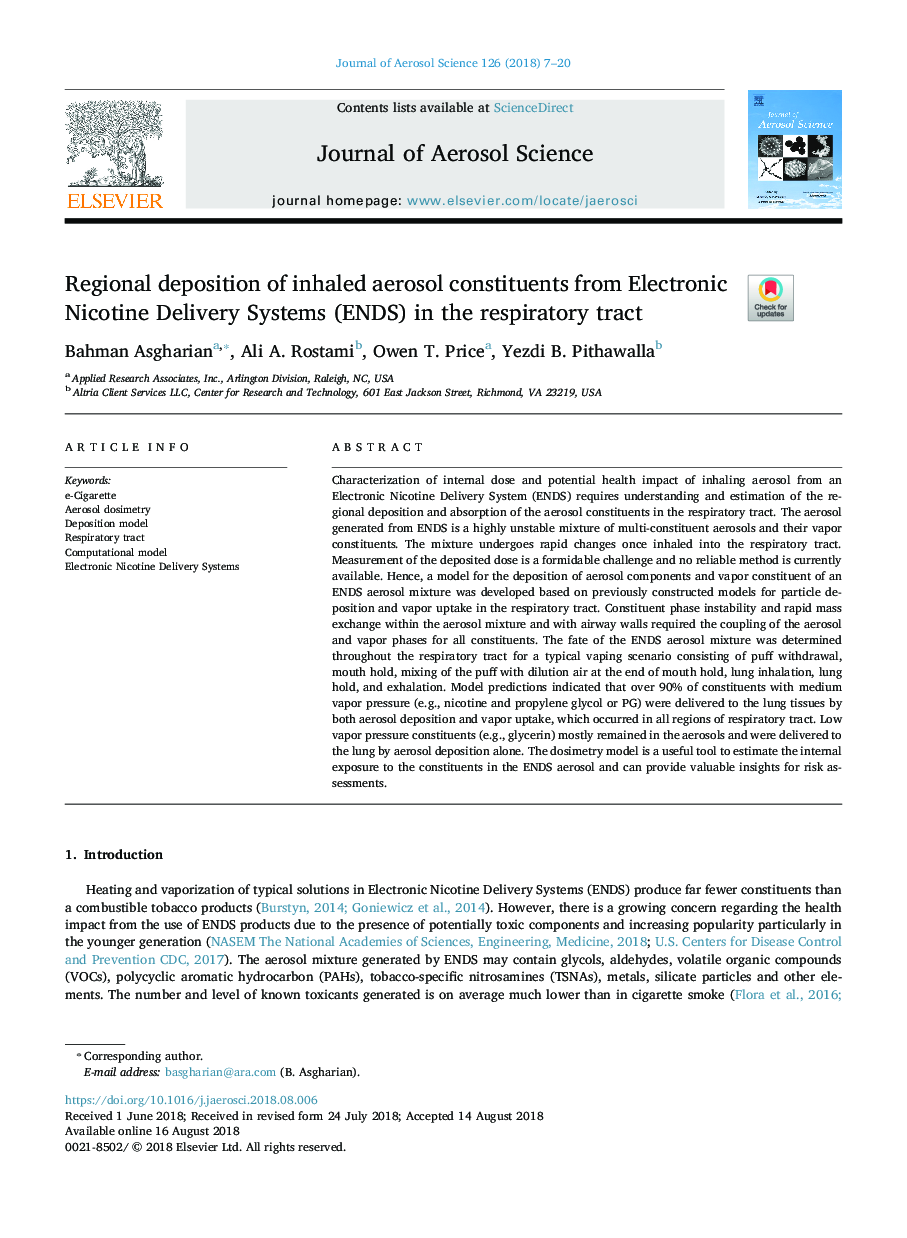| Article ID | Journal | Published Year | Pages | File Type |
|---|---|---|---|---|
| 8946184 | Journal of Aerosol Science | 2018 | 14 Pages |
Abstract
Characterization of internal dose and potential health impact of inhaling aerosol from an Electronic Nicotine Delivery System (ENDS) requires understanding and estimation of the regional deposition and absorption of the aerosol constituents in the respiratory tract. The aerosol generated from ENDS is a highly unstable mixture of multi-constituent aerosols and their vapor constituents. The mixture undergoes rapid changes once inhaled into the respiratory tract. Measurement of the deposited dose is a formidable challenge and no reliable method is currently available. Hence, a model for the deposition of aerosol components and vapor constituent of an ENDS aerosol mixture was developed based on previously constructed models for particle deposition and vapor uptake in the respiratory tract. Constituent phase instability and rapid mass exchange within the aerosol mixture and with airway walls required the coupling of the aerosol and vapor phases for all constituents. The fate of the ENDS aerosol mixture was determined throughout the respiratory tract for a typical vaping scenario consisting of puff withdrawal, mouth hold, mixing of the puff with dilution air at the end of mouth hold, lung inhalation, lung hold, and exhalation. Model predictions indicated that over 90% of constituents with medium vapor pressure (e.g., nicotine and propylene glycol or PG) were delivered to the lung tissues by both aerosol deposition and vapor uptake, which occurred in all regions of respiratory tract. Low vapor pressure constituents (e.g., glycerin) mostly remained in the aerosols and were delivered to the lung by aerosol deposition alone. The dosimetry model is a useful tool to estimate the internal exposure to the constituents in the ENDS aerosol and can provide valuable insights for risk assessments.
Keywords
Related Topics
Physical Sciences and Engineering
Earth and Planetary Sciences
Atmospheric Science
Authors
Bahman Asgharian, Ali A. Rostami, Owen T. Price, Yezdi B. Pithawalla,
